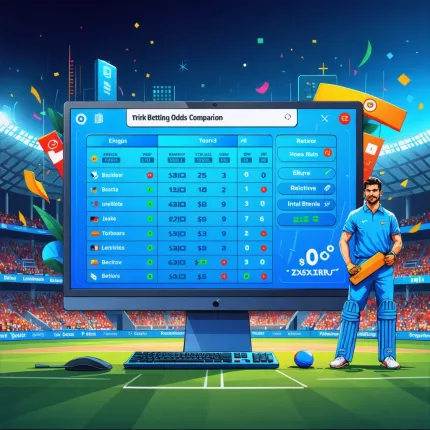Hacked Snapchats: Navigating Social Media Risks

The Alarming Rise of Snapchat Account Breaches
Imagine waking up to find your Snapchat account acting strangely—messages you never sent, snaps you didn’t take, or worse, your brand's carefully curated marketing campaign hijacked by an unknown intruder. For marketers leveraging Snapchat’s dynamic platform to engage younger audiences, this nightmare is becoming increasingly real. The surge in hacked Snapchats is more than just an inconvenience; it’s a glaring spotlight on the cracks within digital security frameworks that many brands rely on.
Across the digital landscape, stories of Snapchat cracked by malicious actors—using tools like Snapchat Phantom or exploiting features to force a Snapchat timeout—are no longer rare headlines but a distressing trend. These breaches don’t just threaten personal privacy; they put brand reputations and marketing investments on the line. The question marketers must ask themselves is: how prepared are we to handle the evolving threats that come with such vulnerabilities?
When Snapchats Get Cracked: What’s at Stake for Marketers?
It’s tempting to think, “That won’t happen to us.” Yet, the reality is harsher. Snapchat, with its ephemeral charm, is a fertile ground for engagement but also a playground for hackers who exploit weak security or human error. The consequences of a compromised account ripple far beyond lost access.
Consider the following:
- Brand Credibility Shattered: A hacked account can disseminate inappropriate content or misinformation, instantly eroding trust built painstakingly over months or years.
- Audience Disengagement: Followers who experience a Snapchat timeout or suspicious activity may unfollow or block the account, reducing reach and impact.
- Financial Losses: Campaigns disrupted by unauthorized access can equate to wasted advertising spend and missed revenue opportunities.
Moreover, tools like Snapchat Phantom, originally designed as unofficial add-ons for enhanced user experience, have been weaponized to bypass Snapchat’s native security protocols. This not only highlights the vulnerabilities within the platform but also the necessity for brands to adopt a vigilant stance on Snapchat security.
Why Snapchat Security Is More Critical Than Ever
Today’s digital marketing landscape demands more than just creativity and engagement metrics. It requires an ironclad foundation of security to protect both the brand and its audience. Snapchat’s ephemeral nature, while appealing, also means that once a breach happens, the damage can be swift and hard to trace.
In this article, we’ll explore the intricate challenges posed by hacked Snapchats and dissect the strategies marketers and social media managers can implement to safeguard their assets. From understanding how breaches occur to practical steps for reinforcing account security, we’ll navigate the complex web of risks and defenses that define today’s Snapchat marketing environment.
Stay tuned as we delve into:
- The mechanics behind common Snapchat hacks and what “Snapchat cracked” really entails.
- The role of third-party apps like Snapchat Phantom in undermining platform security.
- How to identify signs of a Snapchat timeout and respond swiftly to minimize damage.
- Proven best practices for strengthening your Snapchat security and protecting your marketing efforts.
Our goal is simple: equip you with the insights necessary to transform Snapchat from a potential vulnerability into a secure, powerful channel for authentic audience connection. Because in the age of digital marketing, security isn’t just a backend concern—it’s central to brand survival and growth.

Hacked Snapchats: Navigating Social Media Risks and Ensuring Robust Digital Security
What Does It Mean When Snapchats Are Hacked?
When people talk about hacked Snapchats, they refer to unauthorized access to someone’s Snapchat account. This can involve attackers gaining control over the account, viewing private snaps, messages, or even impersonating the user. Hacking incidents often arise due to weak passwords, phishing attacks, or exploitation of vulnerabilities in the app or third-party tools.
Snapchat, like many other social platforms, stores a vast amount of personal data. When accounts are compromised, users risk privacy breaches, reputational damage, and sometimes financial loss, especially if linked to other sensitive accounts or services.
How Do Hackers Gain Access to Snapchat Accounts?
Several common methods are responsible for Snapchat account compromises:
- Phishing Attacks: Users are tricked into entering login details on fake websites or through deceptive messages.
- Credential Stuffing: Attackers use leaked usernames and passwords from other breaches to access Snapchat accounts, especially when users reuse passwords.
- Exploiting Third-party Apps: Apps like Snapchat Phantom or unofficial tools sometimes promise enhanced features but can introduce vulnerabilities or even act as malware vectors.
- Session Hijacking: Attackers intercept active sessions, which can lead to Snapchat timeout issues or unauthorized access without needing a password.
Understanding these attack vectors helps users and marketers implement better security practices.
What Is Snapchat Phantom, and Why Is It Risky?
Snapchat Phantom is a popular third-party modification of Snapchat that offers extra features not available in the official app, such as saving snaps invisibly or customizing the interface. However, using such mods violates Snapchat’s terms of service and can put accounts at risk.
These apps often require users to provide their login credentials, which can be intercepted or stored insecurely, leading to Snapchat cracked accounts. Moreover, they can trigger Snapchat timeout errors due to conflicts with Snapchat’s servers, resulting in temporary or permanent bans.
How Can Users Protect Themselves from Hacked Snapchats?
Robust Snapchat security is essential for both individual users and marketers managing brand accounts. Here are practical steps to secure Snapchat accounts:
- Use Strong, Unique Passwords: Avoid reuse of passwords across platforms and consider using a password manager.
- Enable Two-Factor Authentication (2FA): Adds an extra layer of security by requiring a secondary verification step during login.
- Avoid Third-party Apps: Refrain from using unofficial apps like Snapchat Phantom to prevent exposure to vulnerabilities.
- Be Wary of Phishing Attempts: Always verify URLs and avoid clicking suspicious links or sharing credentials.
- Regularly Monitor Account Activity: Keep an eye on login locations, devices, and any unusual activity.
- Update the Snapchat App: Ensure the app is always up-to-date to benefit from the latest security patches.
How Does Snapchat Timeout Affect Account Security?
Snapchat timeout typically refers to a temporary lockout or delay in accessing the app due to suspicious behavior, such as repeated login attempts or use of unauthorized third-party apps. While frustrating, this timeout is a security measure designed to prevent unauthorized access.
Repeated timeouts can signal that an account is under attack or compromised. Users experiencing frequent timeouts should review their account security, change passwords, and avoid risky behaviors that trigger these safeguards.
Why Is Snapchat Security Crucial for Digital Marketing?
For marketers leveraging Snapchat as a platform, security is paramount. Hacked accounts can lead to loss of followers, brand trust, and sensitive campaign data. Furthermore, unauthorized posts or messages from compromised accounts can damage brand reputation.
According to a 2023 report by Cybersecurity Ventures, social media account hacks have increased by over 30% in the last two years, underscoring the need for businesses to prioritize platform security. Implementing strong Snapchat security protocols helps safeguard brand integrity and customer trust.
Marketing teams should also train staff on cybersecurity best practices and limit access privileges to only essential personnel.
Real-Life Example: Snapchat Account Breach and Its Consequences
In 2019, a high-profile Snapchat influencer experienced a severe breach when their account was Snapchat cracked through a phishing scam. The attacker posted inappropriate content, leading to a temporary suspension of the account and significant follower loss. The incident highlighted the dangers of inadequate security and the impact on personal and professional reputation.
This case emphasizes why both individuals and marketers must treat Snapchat security with the utmost seriousness.
Conclusion: Navigating Social Media Risks with Proactive Security Measures
Hacked Snapchats serve as a critical reminder of the evolving risks on social media platforms. By understanding how accounts are compromised—whether through phishing, use of third-party apps like Snapchat Phantom, or session attacks—and embracing strong security practices, users can protect themselves and their brands.
Staying vigilant about password hygiene, enabling two-factor authentication, avoiding unauthorized apps, and monitoring account activity are foundational steps to navigate the digital landscape safely. As social media continues to play a pivotal role in marketing, robust Snapchat security is not just a technical necessity but a strategic business imperative.

